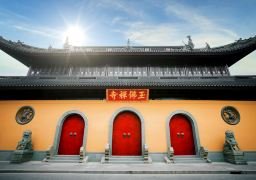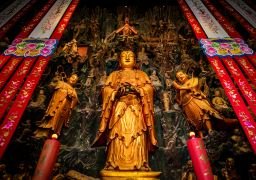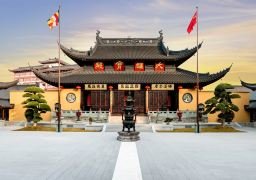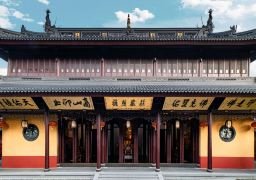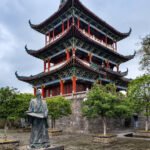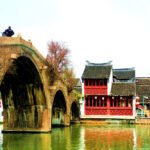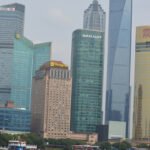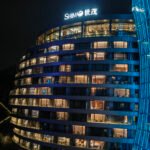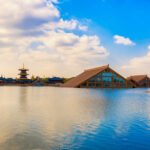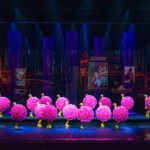The Yufo Temple in Shanghai, also known as the Jade Buddha Temple, is located in a bustling area and is a pure land in the downtown. This temple was built in the 8th year of Guangxu in the Qing Dynasty (1882). It is one of the famous temples in Shanghai together with Longhua Temple and Jing’an Temple. The current Yufo Temple is divided into two major parts: the front yard and the back yard. The front yard is the original site of the Yufo Temple. Along the central axis are successively the large screen wall, the Heavenly King Hall, the Mahavira Hall, and the Prajna Chamber (on the upper floor are the Jade Buddha Tower and the Sutra Depository), which are palace-style architectural complexes imitating the Song Dynasty. The back yard is a multi-functional Juequn Building. There is a cultural relics room in the temple, which houses precious cultural relics from the Northern Wei, Tang, Song, Yuan, Ming, and Qing dynasties. The more famous ones in the Yufo Temple are the two jade Buddhas that Master Huigen from Putuo Mountain in the late Qing Dynasty brought back from Myanmar. In fact, Master Huigen brought back a total of five jade Buddhas of different sizes. On the way back to Putuo Mountain, he left two of them in Shanghai. One is in the Jade Buddha Tower. It is a seated statue of Sakyamuni with a height of 1.92 meters. The gold foil pasted on the Buddha statue and the inlaid jewels are dazzling and are the ‘treasure of the temple’. On the ceiling top of the Jade Buddha Tower, there are also 500 gilded Buddha statues. A separate ticket of 10 yuan is required to enter the Jade Buddha Tower for a visit. Another one is in the Reclining Buddha Hall on the west side of the temple. It is a reclining statue of Sakyamuni with a length of 96 centimeters. It is made according to the appearance of Sakyamuni when he passed away at the age of 80. Lying on his side with his right hand supporting his head, he has a serene expression. Opposite the reclining Buddha, a new jade reclining Buddha about 4 meters long was added, donated by believers from Singapore in modern times. In addition, it is also worth seeing the ink carvings of Dong Qichang’s regular script ‘Forty-two Chapters Sutra’ and running script ‘Record of Sakyamuni’s Enlightenment’ inlaid on the walls in front of the Prajna Chamber and on the walls of the east and west corridors, the stone carvings of the thirty-two manifestations of Avalokitesvara painted by famous painters in the Tang, Song, Yuan, Ming and Qing dynasties, the stone carvings of the eight stages of Sakyamuni’s enlightenment, and the stone carvings of sixteen arhats painted by Guanxiu of the Tang Dynasty. The Yufo Temple has strong incense offerings. On the first and fifteenth day of each lunar month, there are continuous stream of pilgrims. The more famous one is burning incense on the first day of the lunar new year. Some pilgrims wait at the temple gate on New Year’s Eve, hoping to burn incense so that their wishes can be realized more effectively. Opening hours: Open all year round from 08:00 to 16:30.
